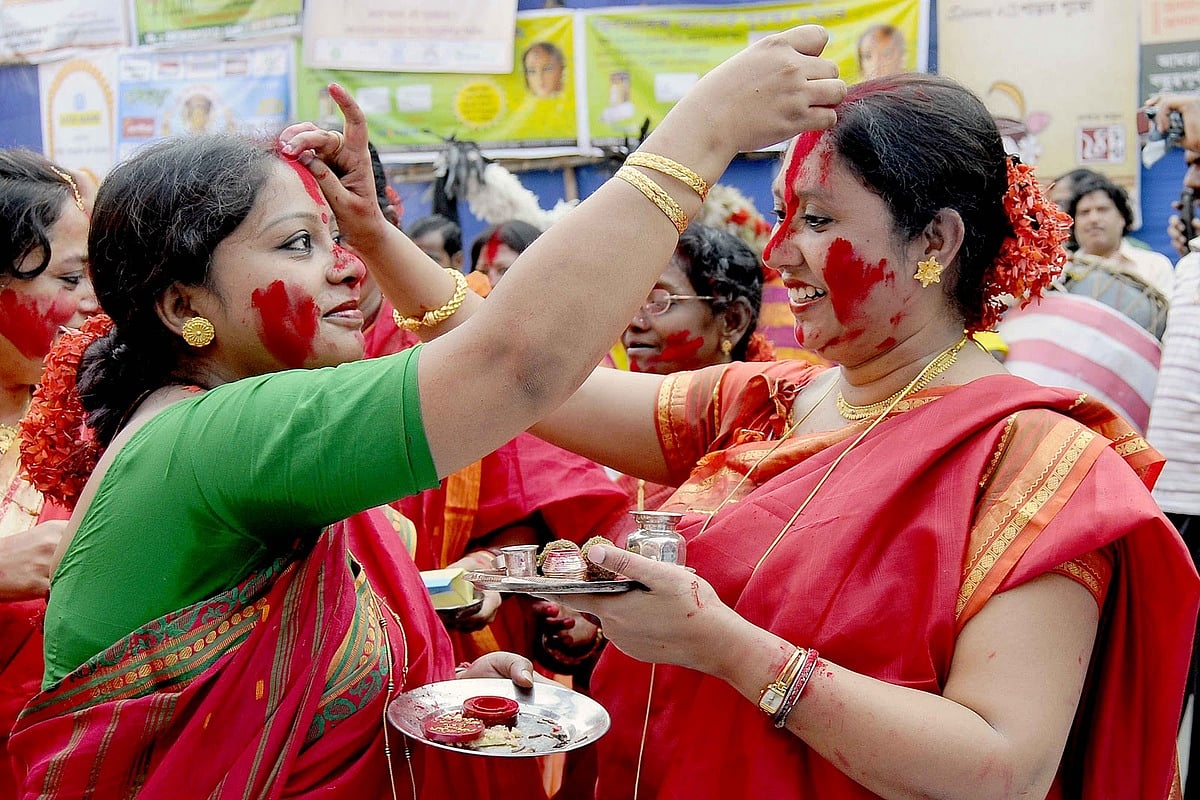Why Sindur Khela Is Only Played By Married Women? Know Significance Behind This Durga Pujo Ritual
According to traditional belief, participating in Sindur Khela shields women from widowhood and strengthens their role as guardians of their families

Durga Puja, one of the most cherished festivals in India, particularly in West Bengal, concludes with Vijayadashami or Dashami. On this day, devotees bid farewell to Goddess Durga as her idol is immersed in a water body, marking her return to Mount Kailash with Lord Shiva. Among the various rituals performed before immersion, Sindur Khela stands out as a vibrant and emotionally significant tradition celebrated by married women.
What is Sindur Khela?
Sindur Khela, meaning “the game of vermilion”, is a symbolic ritual where married women apply sindoor (vermilion) on Goddess Durga and then smear it on each other. It is considered the final festive moment before the idol immersion and is performed with the belief that it brings prosperity, long life for husbands, and protection for children.
Vermilion in Hindu tradition represents marriage and is seen as a sacred mark of a woman’s marital bond. By applying it, women not only pray for their family’s well-being but also celebrate the strength of womanhood and their protective role in family life.
Origins of Sindur Khela
The exact beginnings of this ritual are not clearly documented, but folklore suggests that Sindur Khela began almost 200 years ago in the Durga Pujas of wealthy zamindar households in Bengal. Over time, it spread to community pujas and is now one of the most iconic visuals of Vijayadashami.
According to traditional belief, participating in Sindur Khela shields women from widowhood and strengthens their role as guardians of their families. It is also thought to resolve disputes and promote harmony within the community.
The ritual step-by-step
The Sindur Khela ceremony follows a specific sequence:
Worship of the Goddess- Married women first offer vermilion to Maa Durga by applying it to her forehead and feet.
Devi Boron (Farewell Ritual)-With a betel leaf placed on their palms, women touch Maa Durga’s face, symbolically wiping away her tears as she prepares to leave her parents’ home. Sindoor is also applied to her forehead, bangles (shakha and pola), and sweets are offered.
Smearing Vermilion- Women then apply sindoor to each other’s foreheads, cheeks, and hair partings.
Sharing Sweets- As part of the joyous celebration, women exchange sweets, enhancing the spirit of togetherness.
The sight of women dressed in traditional white sarees with red borders, adorned with jewellery and sindoor-streaked faces, creates one of the most powerful images of Durga Puja.
Emotional and social significance
Beyond its religious meaning, Sindur Khela fosters bonding among women. The playful smearing of sindoor breaks barriers, encourages friendship, and creates an atmosphere of joy amidst the emotional farewell. It reflects not just devotion to the goddess but also the collective strength, unity, and resilience of women.
On a deeper level, this ritual symbolises Durga as the daughter leaving her parents’ home after her annual visit. Married women, through this act, relate to her journey and bid her an affectionate goodbye.
RECENT STORIES
-
-
-
-
-